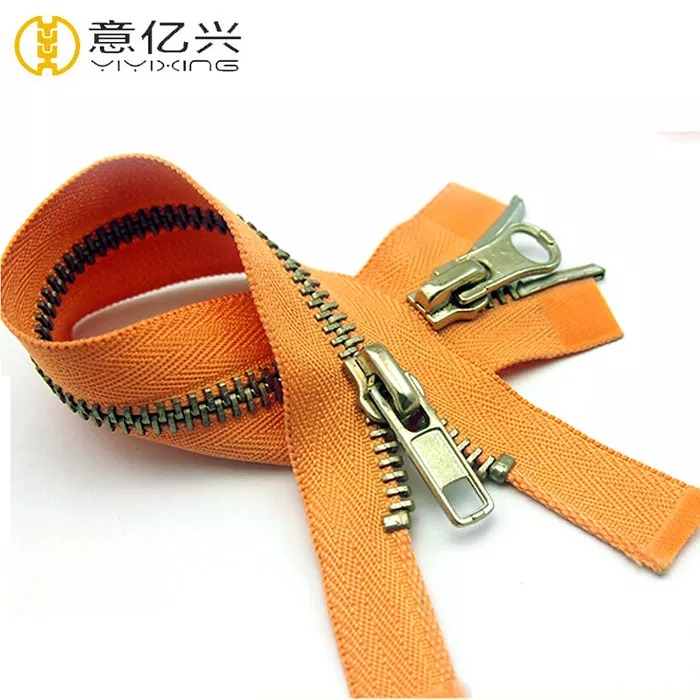Many suitcases on the market are zippered suitcases, and some also have combination locks. According to the owner of the luggage store, the current luggage zipper materials are roughly divided into nylon, resin and metal. The zipper of the suitcase priced at about 50 yuan is made of plastic material, and the connection between the zipper and the box is made of relatively soft fabric, while the zipper material of the suitcase priced at about 100 yuan is mostly resin. The zipper used in the luggage with a price of four or five hundred yuan is made of metal, and the safety factor is higher.
The prototype of the zipper is a "self-locking buckle". The zipper has two rows of sprockets with space in the middle, and each sprocket is convex on one side and concave on the other. When we zip the zipper, the slider guides the teeth at both ends and superimposes one after another in the middle of the slider: the concave surface of the sprocket is superimposed on the convex surface of the lower sprocket, and the concave surface of the upper sprocket is superimposed on the convex surface of the sprocket, forming a An arrangement of sprockets that engage continuously. This type of luggage zipper is intertwined and connected by two rows of fastener elements, and the closing effect depends on the engagement of the fastener elements. The horizontal bite force is relatively strong, but if the longitudinal force is applied, the two rows of fastener elements of the zipper are easily dislocated up and down, showing a small opening. , Relying on this small opening, the zipper is easy to open.
The quality of the zipper is related to the raw material and width of the fastener elements. The zipper is a connecting piece that is repeatedly opened and closed. It is composed of many staggered but precisely meshed teeth, which are meshed together to form a closed state. Some inferior zippers have large gaps between the teeth. Inserting the sharp pen into the zipper will cause the zipper teeth to be misaligned, so that the zipper will crack, so it can be easily opened. The raw material of nylon zipper is soft, and it is most likely to be deformed and dislocated under force; the raw material of metal zipper is hard and relatively safe. Narrow zippers are easily poked open by longitudinal forces, and wider zippers are relatively difficult to poked open. The double zipper bag has a good preventive effect on ballpoint pens and the like.

interdental fit
In terms of the fit of the teeth, the metal zipper luggage is more secure. The teeth on both sides of the metal zipper have a higher fit than nylon zippers and resin zippers, while the zippers on cheap bags are nylon zippers and resin zippers. Zipper, the gap between the zipper teeth is large, so it is easier to poke open. However, compared with plastic zippers, resin zippers have slightly higher bite strength, so zippers with good tooth-seam fit are relatively safer.
Zipper material
In terms of zipper material, metal zipper elements are discharged by copper wire or aluminum wire through a tooth-arranging machine, resin zipper elements are made of polyester plastic rice through dye color matching and discharged through an injection molding machine, and nylon zipper chain The teeth are made of nylon monofilament wrapped around the centerline through a heated die. Metal zipper teeth have high rigidity and high frictional resistance. Among the three, the bite force is the strongest. Even the metal zipper with the strongest bite is very likely to be cut open when it is forcibly inserted with sharp tools such as awls and knives.
In fact, whether it is a nylon zipper, a resin zipper, or a metal zipper, it can be opened in the end, the only difference is that the time-consuming time varies. Relatively speaking, metal zippers have the highest safety factor, followed by resin zippers, and nylon zippers are the easiest to open. The metal zipper has hard material, high rigidity of the chain teeth, and high frictional resistance. Among the three, the bite force is the strongest, and the force required is the largest, which is relatively safe.


